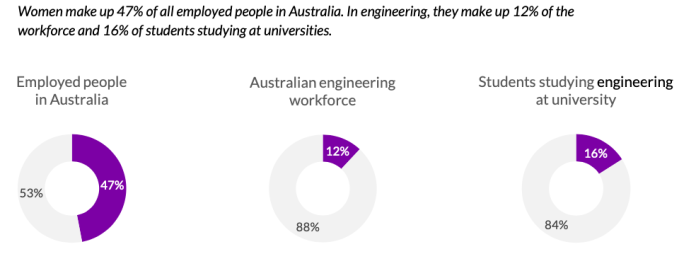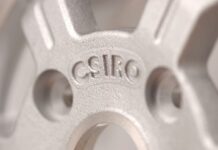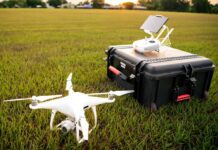
Media Release by Engineering Taskforce for Australia
We must support teachers and early educators if we are to redress the alarming lack of women in engineering. That’s the message from a new Engineering Taskforce for Australia report released today.
“Women make up 47% of all employed people in Australia, yet only 11.2% of working engineers are women,” says the Australian Government Women in STEM Ambassador Professor Lisa Harvey-Smith.
“Problem-solving is fundamental to engineering. More perspectives equal better solutions, new ideas, and better financial results.
“By increasing the number of women in engineering, not only will we strengthen Australia’s economy, but we will also increase our capacity to address global challenges such as climate change and the transition to a carbon-neutral future.”
Research shows that children’s understanding of engineering is developing around the same time as ideas and stereotypes about gender. With teachers, early educators and school leaders crucial to sparking and fostering an interest amongst girls in all engineering has to offer – including dispelling the myth that it’s all a hard hat and high vis job – the report outlines actions that schools, government and industry can take to:
- encourage girls to participate equally in engineering, maths and science lessons and discussions
- promote women as role models in engineering, maths and science, to show children what’s possible
- create learning environments around engineering where girls can feel a sense of belonging
“There is a critical window in early childhood education, as girls form their identity and ideas about what they’re capable of. We must all work together – industry, government and education – to ensure girls’ interest in engineering is recognised and nurtured”, says Monash University Dean of Engineering Elizabeth Croft.
The report also recommends teaching engineering as a distinct learning area, not just as a part of maths and science.
“There are many STEM initiatives and activities, but few address engineering as distinct from science, technology and maths. As a result, teachers and students don’t associate what they’re doing as ‘engineering’. Girls might not realise they have aptitude in this field, and that these skills create opportunities for a rewarding career.” says Taskforce Chair and Engineers Australia Chief Engineer Jane MacMaster.
The Taskforce – established in 2019 – commissioned Monash Education Futures to identify ways to mitigate the barriers preventing women from choosing to study engineering.
“If we want more women to choose higher education in engineering, we need more girls to engage with engineering,” says Professor Harvey-Smith.
“We don’t want to be having this same conversation in 20 years, which is why we are calling on all sectors to take action now that supports teachers and early educators to build the engineering identity.”
“We need girls to know that they can succeed as an engineer.”
About the Engineering for Australia Taskforce
Founded by the Deans of Engineering at the University of New South Wales (UNSW), Monash University and Australian National University (ANU), the Engineering for Australia Taskforce aims to close the gender gap in university engineering programs by addressing barriers to women’s participation.
Supported by the Australian Government’s Women in STEM Ambassador, Professor Lisa Harvey-Smith, the taskforce includes representatives from universities across Australia as well as peak professional bodies, Engineers Australia and the Australian Academy of Technology and Engineering, and Cicada Innovations.
Image Credit: engineersaustralia.org.au




















